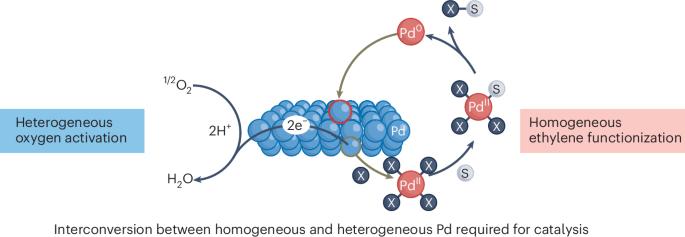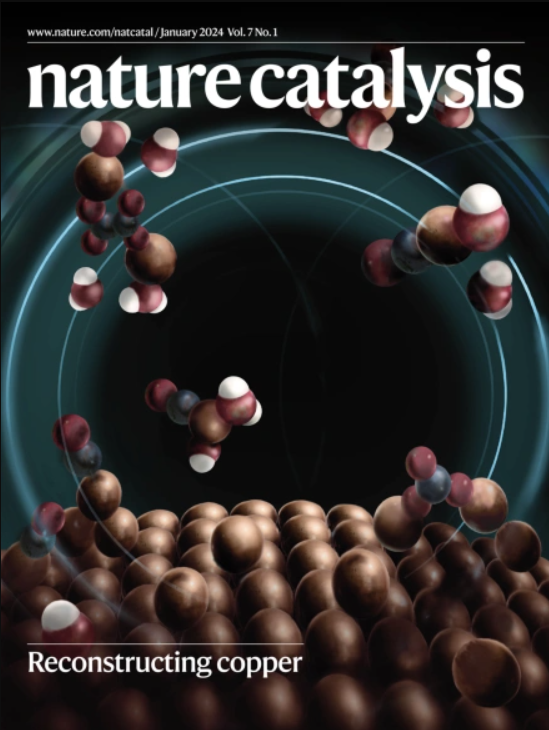Bridging catalysis
IF 44.6
1区 化学
Q1 CHEMISTRY, PHYSICAL
引用次数: 0

桥接催化
该团队首先分析了该反应的模型液相系统,该系统由醋酸-醋酸钾溶液与Pd/C组成,并发现Pd(0)受到分子氧的腐蚀。这允许金属作为Pd(II)醋酸盐的增溶,Pd(II)物种然后与乙烯反应生成VA和金属Pd(0)作为沉淀。他们还注意到Pd/C比本体Pd更能促进反应。他们还发现,在没有O2的情况下,这也适用于模型VA生产的电化学和热化学过程:在所有情况下,在腐蚀事件中,Pd(II)物质从固体载体中溶剂化,但Pd再氧化是一个非均相过程,Pd(0)颗粒分散在载体上,正如TEM测量证实的那样,为下一个催化循环中的后续腐蚀步骤做好准备。最后,在该工艺的工业条件模型系统中也观察到相同的电化学行为。Surendranath及其同事的研究指出了多相Pd(0)和均相Pd(II)之间的动态相互作用,其催化系统挑战了当前的催化相分离范式,突出了均相和非均相反应模式之间的复杂关系。
本文章由计算机程序翻译,如有差异,请以英文原文为准。
求助全文
约1分钟内获得全文
求助全文
来源期刊

Nature Catalysis
Chemical Engineering-Bioengineering
CiteScore
52.10
自引率
1.10%
发文量
140
期刊介绍:
Nature Catalysis serves as a platform for researchers across chemistry and related fields, focusing on homogeneous catalysis, heterogeneous catalysis, and biocatalysts, encompassing both fundamental and applied studies. With a particular emphasis on advancing sustainable industries and processes, the journal provides comprehensive coverage of catalysis research, appealing to scientists, engineers, and researchers in academia and industry.
Maintaining the high standards of the Nature brand, Nature Catalysis boasts a dedicated team of professional editors, rigorous peer-review processes, and swift publication times, ensuring editorial independence and quality. The journal publishes work spanning heterogeneous catalysis, homogeneous catalysis, and biocatalysis, covering areas such as catalytic synthesis, mechanisms, characterization, computational studies, nanoparticle catalysis, electrocatalysis, photocatalysis, environmental catalysis, asymmetric catalysis, and various forms of organocatalysis.
 求助内容:
求助内容: 应助结果提醒方式:
应助结果提醒方式:


